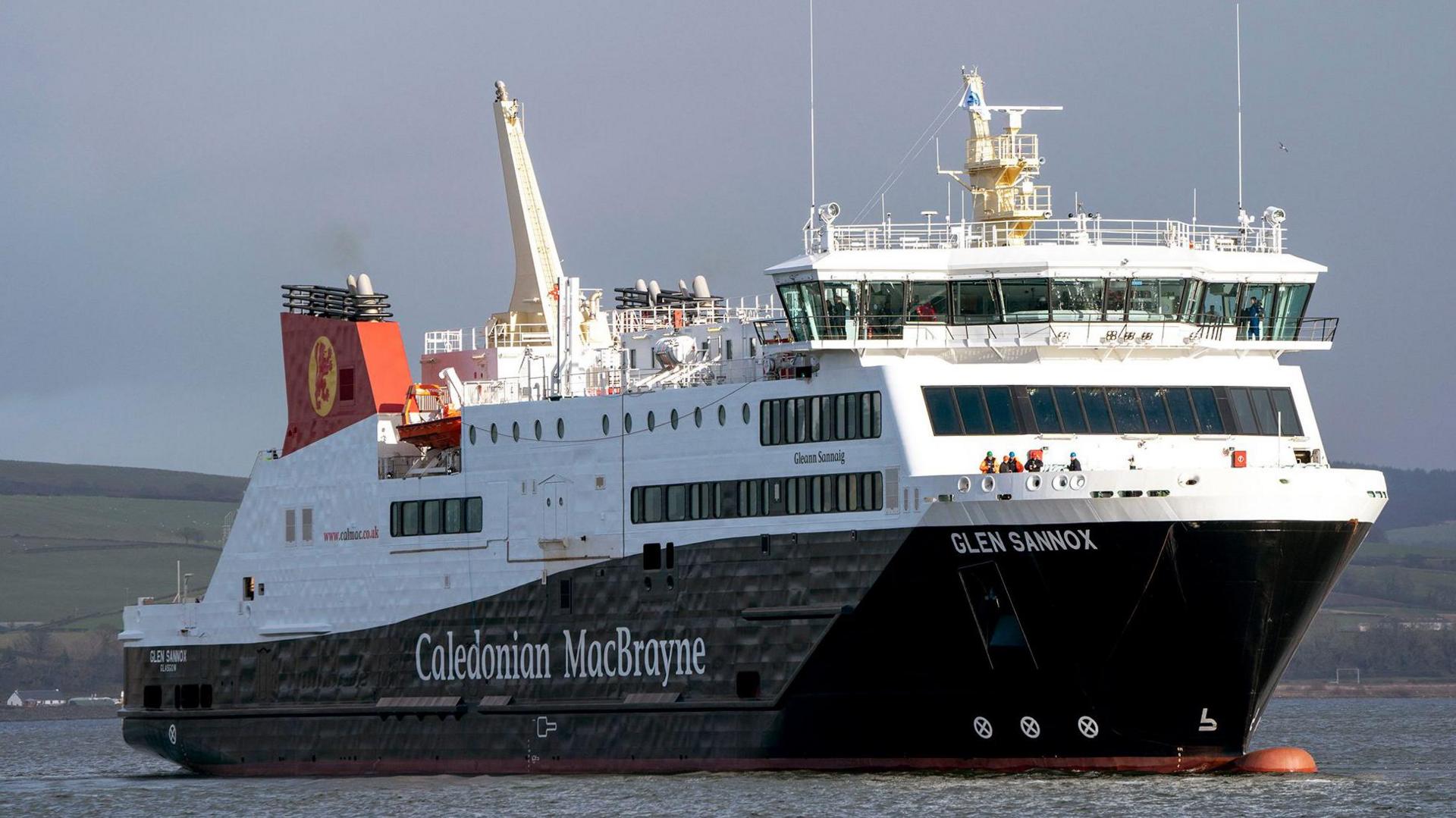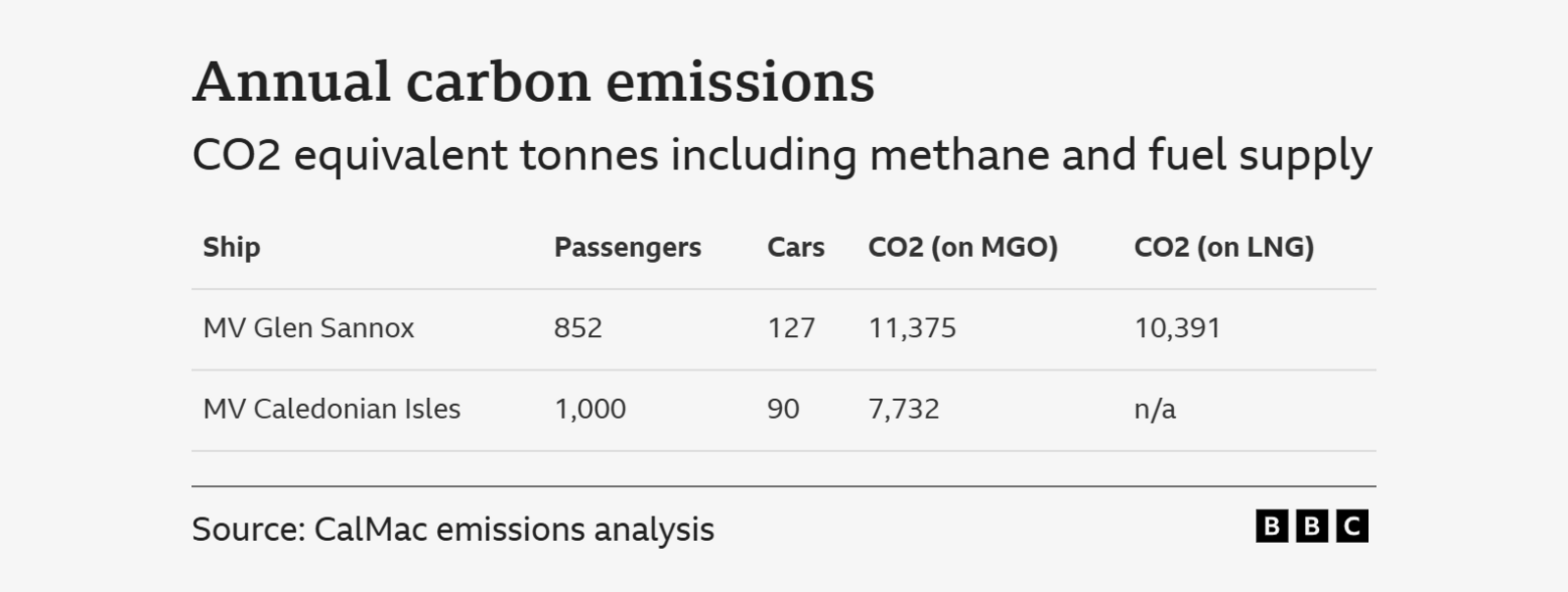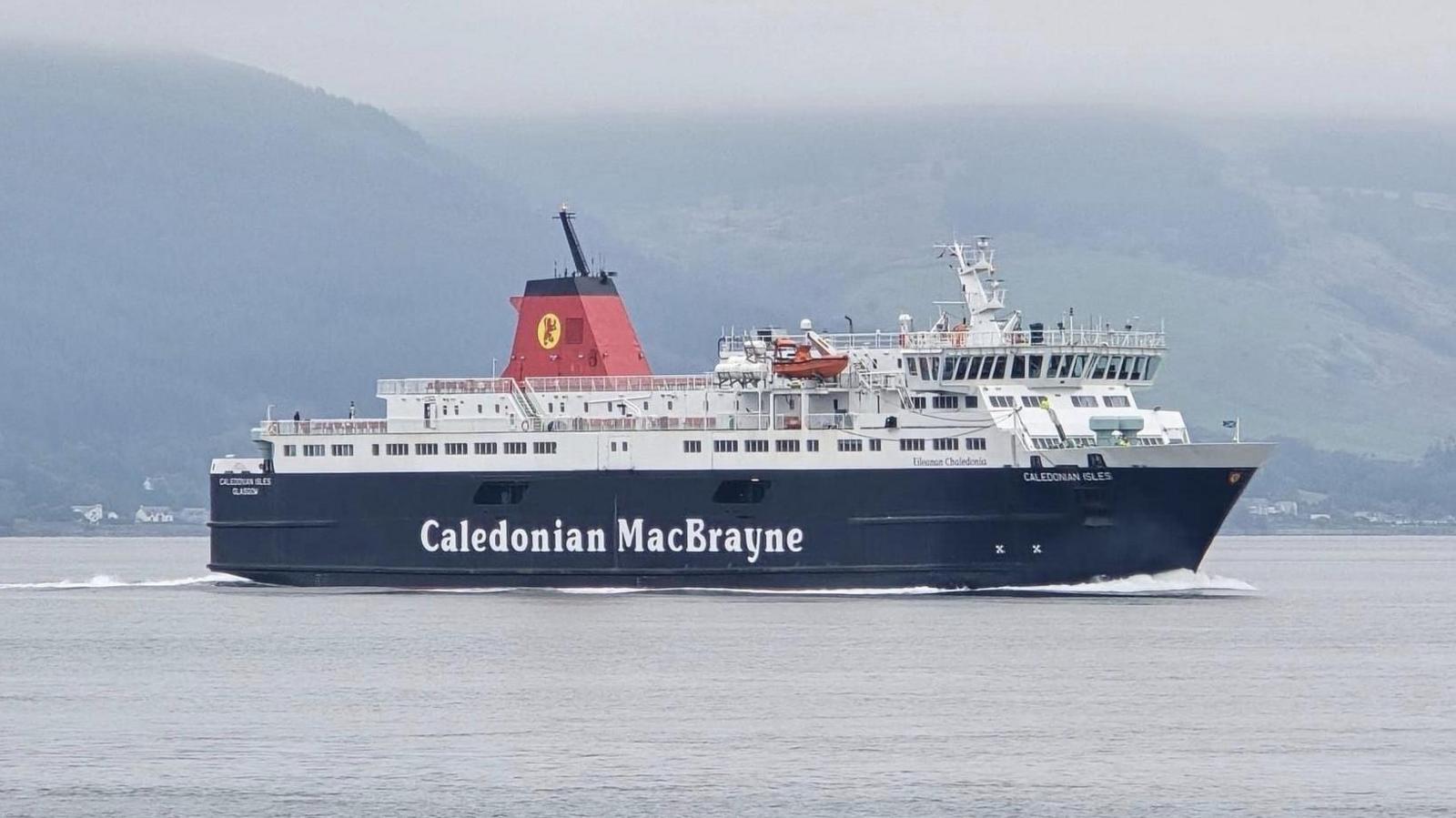News EventMonday, December 30, 2024 @ 0700 |
GLEN SANNOX (2024- Ro-ro ferry 102.4m 336 feet overall of Caledonian MacBrayne, Gourock, Scotland) |
 Own Page Own Page |
||||
'Green' ferry GLEN SANNOX emits more CO2 than old diesel ship CALEDONIAN ISLES ...... PART 1 of 3 |
||||||
|
||||||
|
From BBC Scotland online news 30 December 2024'Green' ferry emits more CO2 than old diesel ship
PA Media
Glen Sannox brings greater car capacity to the Arran route but a bigger carbon footprint The carbon footprint of a long-delayed new "green" ferry will be far larger than the 31-year-old diesel ship that usually serves the route between the Scottish mainland and the island of Arran. An emissions analysis by CalMac has calculated MV Glen Sannox will emit 10,391 equivalent tonnes of CO2 a year compared with 7,732 for MV Caledonian Isles. The dual-fuel ferry has more car capacity but requires larger engines which also emit methane, a greenhouse gas with a far greater global warming effect than CO2. Ferries procurement agency CMAL, which owns the ship, said the comparison was "inaccurate" as Glen Sannox is a larger vessel. The size of Glen Sannox is a factor in its carbon footprint, but so too is the liquified natural gas (LNG) fuel which is less climate-friendly than previously claimed. One expert on transport emissions told BBC News that if the "upstream" carbon cost of importing LNG from Qatar is included in the emissions calculation, it might be better to run the new ship on diesel. Prof Tristan Smith, from University College London's Energy Institute, said: "In a best case scenario there's a negligible benefit of using LNG, and at worst there would be a deterioration." Glen Sannox is the first ferry ever built in the UK capable of running on both LNG and marine gas oil (MGO), a low-sulphur type of diesel. At its launch in 2017, then first minister Nicola Sturgeon said it would contribute to "Scotland's world-leading climate change goals". But the LNG technology also added complexity. The Ferguson shipyard had to overcome many engineering and regulatory challenges before the ship was delivered last month, years late and over budget. The size of the ship also means it cannot berth at the usual mainland harbour at Ardrossan until a major redevelopment takes place. When it enters service next month, Glen Sannox will bring a significant increase in car capacity. It can carry 127 cars compared to about 90 for Caledonian Isles. Air pollutants, known as NOx and SOx, will be also reduced, while its power and manoeuvrability should mean fewer weather-related cancellations. But in terms of greenhouse emissions, the CalMac analysis - seen by BBC News - reveals the benefits of the LNG technology are quite small. Once methane emissions are factored in, the benefit of running the ship on LNG rather than MGO-only is less than 9%. And the increased fuel consumption of the heavier ship means its overall carbon footprint is about 35% larger than Caledonian Isles, which is due to return to the Arran route in March following repairs. Why is the ship's carbon footprint so big?The carbon emissions have nothing to do with the design and construction of Glen Sannox by the Ferguson shipyard - the yard simply built the ship it was asked for. Instead they are due to decisions taken by ferries procurement agency CMAL, ferry operator CalMac and Transport Scotland before the contract was put out to tender. The old ferry, Caledonian Isles, was designed to carry 110 cars, but modern cars are so much wider, it can now only fit about 90. Christopher Brindle
The former main Arran vessel Caledonian Isles will operate alongside Glen Sannox until the second LNG vessel Glen Rosa comes into service Glen Sannox was specified to carry 127 modern cars, or 16 HGVs, and to have a higher top speed (although this is not necessary for Arran sailings) resulting in a far heavier ship which requires bigger engines. When running on LNG, CO2 emissions are up to 25% lower - but this is almost entirely offset by the larger engine size and higher fuel consumption. |
||||||


